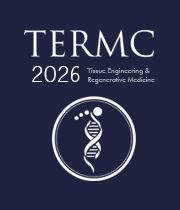Organoids and Lab-Grown Organs
Miniaturized biological systems capable of mimicking complex organ architecture are transforming regenerative medicine. Organoids and lab-grown organs offer powerful platforms for modeling disease, studying development, and exploring therapeutic interventions without relying on animal models. Derived from stem cells and grown in three-dimensional culture systems, organoids self-organize into structures resembling the functional units of organs like the liver, intestine, brain, or kidneys. Coupled with bioreactors and advanced scaffolds, lab-grown organs are progressing toward clinical relevance, especially in transplantation and toxicity testing. Organoids and lab-grown organs bridge developmental biology with engineering, opening new frontiers for personalized treatment, functional organ replacement, and ethical drug discovery that mirrors in vivo responses with remarkable fidelity.

Nagy Habib
Imperial College London, United Kingdom
Lucie Bacakova
Institute of Physiology of the Czech Academy of Sciences, Czech Republic



Title : AI-integrated high-throughput tissue-chip for space-based biomanufacturing applications
Kunal Mitra, Florida Tech, United States
Title : Stem cell technologies to integrate biodesign related tissue engineering within the frame of cell based regenerative medicine: towards the preventive therapeutic and rehabilitative resources and benefits
Sergey Suchkov, N.D. Zelinskii Institute for Organic Chemistry of the Russian Academy of Sciences, Russian Federation
Title : In vitro evaluation of lyophilized Dedifferentiated Fat cells (DFAT) impregnated artificial dermis
Kazutaka Soejima, Nihon University, School of Medicine, Japan
Title :
Nagy Habib, Imperial College London, United Kingdom
Title :
Alexander Seifalian, Nanotechnology & Regenerative Medicine Commercialisation Centre, United Kingdom
Title : The regenerative medicine of the future
Marco Polettini, DVM, Italy